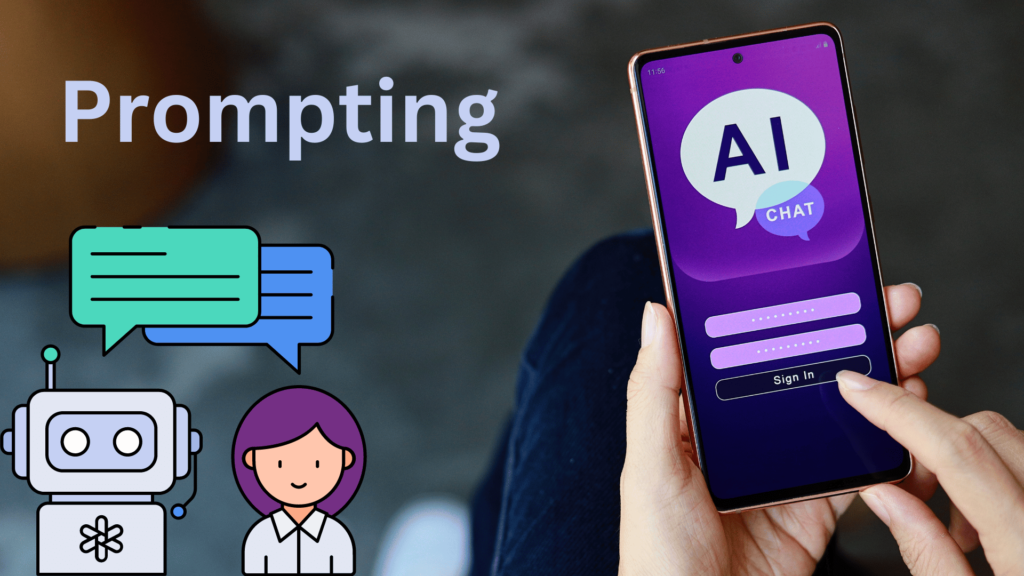
In the fascinating world of Generative AI, prompting plays a crucial role in guiding models to produce desired outputs. Whether you are new to the concept or an experienced AI enthusiast, understanding prompt engineering is essential for harnessing the true potential of language models. This blog will all aspects of prompting, its significance, and best practices for crafting effective prompts.
What is a Prompt?
A prompt is a set of instructions, examples, or questions that serve as input to a generative AI model. It acts as a guiding signal, directing the model’s output toward a specific goal or Context. A well-constructed prompt can significantly impact the quality and relevance of the generated content.
How Does Prompting Work?
When a generative AI model receives a prompt, it analyses the input and generates a response based on the patterns and information it has learned during training. The model uses the prompt to prime its internal state, making it more likely to produce content that aligns with the Context.
Prompt engineering involves fine-tuning the language and structure of the prompt to obtain desired outputs. The choice of words, tone, and level of specificity all contribute to shaping the AI’s response.
The Importance of Prompt Engineering
Effective, prompt engineering is critical to working with generative AI models. Here are some reasons why it is crucial:
1. Controlled Outputs: By carefully crafting prompts, developers can exercise greater control over the AI’s responses, ensuring that they align with the desired purpose.
2. Bias Mitigation: Prompts can be used to reduce bias in AI-generated content. For instance, including specific guidelines to avoid sensitive topics can help prevent the model from generating offensive or harmful outputs.
3. Domain-Specific Generation: Prompt engineering allows models to be fine-tuned for specific domains, such as medical, legal, or creative writing, making them more relevant and reliable in those contexts.
4. Enhanced Creativity: Well-designed prompts can encourage AI models to be more creative and innovative in their responses, leading to novel and engaging content.
Types of Prompts
There are various types of prompts that content creators can use to instruct AI models:
1. Instructions:
Clear and precise instructions give the model a specific direction when generating content. For example, instructing the AI to write a poem about a sunset creates a focused and purposeful prompt.
2. Examples:
By showing the AI model examples of the desired output, it can better understand the style and structure expected in its response. For instance, providing a formal email sample can guide the model in producing similar content.
3. Questions:
Asking questions can prompt the AI to provide informative and relevant answers. For instance, querying AI about the benefits of renewable energy can lead to a well-informed response.
These prompts involve a series of interconnected instructions or questions that encourage the AI model to explore a topic in-depth. They can lead to more comprehensive and detailed outputs.
Best Practices for Prompt Engineering
Crafting effective prompts requires careful consideration and experimentation. Here are some best practices for prompt engineering:
1. Be Specific:
Specific prompts lead to more precise outputs. Avoid vague instructions and provide clear Context to guide the AI model accurately.
2. Use Clear and Concise Language:
Keep your prompts straightforward and easy to understand. Avoid ambiguity or complex sentence structures that might confuse the AI.
3. Provide Context:
Help the AI model understand the Context and purpose of the task. Contextual information can significantly influence the generated content.
4. Experiment with Different Prompts:
Don’t hesitate to try various prompts to see which ones yield the best results. The effectiveness of prompts can vary depending on the AI model and the task at hand.
Conclusion
Prompt engineering is a powerful tool in generative AI, allowing developers and content creators to steer AI models toward producing relevant and valuable content. By understanding the various types of prompts and following best practices, we can harness the potential of AI to assist and augment human creativity and productivity.
The Future of Prompting
As AI research progresses, prompt engineering will likely become more refined and practical. Advancements in NLP and machine learning will enable AI models to comprehend nuanced prompts better and deliver more contextually appropriate responses.
Resources for Learning More About Prompt Engineering
Several resources are available for those interested in delving deeper into prompt engineering. Online communities, research papers, and AI workshops often discuss the latest techniques and best practices in prompt engineering.
In conclusion, prompt engineering is essential for anyone working with generative AI models. It empowers content creators to guide AI in producing outputs that align with specific objectives and opens up new possibilities for AI-assisted creativity and problem-solving. As we continue to cover all aspects of AI, prompt engineering will remain a vital aspect of unleashing the true power of Generative AI.
